The Effects of Co-Residence on the Subjective Well-Being of Older Chinese Parents
Abstract
:1. Introduction
2. Materials and Methods
2.1. Data
2.2. Measures
2.2.1. Outcome Variable: The Sustainability of Subjective Well-Being
- How do you rate your life at present?
- Do you always look on the bright side of things?
- Are you as happy now as when you were younger?
- Do you often feel fearful or anxious?
- Do you often feel lonely and isolated?
- Do you feel the older you get the more useless you are?
2.2.2. Treatment Variable: A Transition to Co-Residence with an Adult Child
2.3. Econometric Models
2.4. Matching Covariates
3. Results
3.1. Pooled Sample
3.2. Urban and Rural China
3.3. Son versus Daughter
3.4. Robustness Tests
4. Discussion
5. Conclusions
Author Contributions
Funding
Acknowledgments
Conflicts of Interest
References
- Brackbill, Y.; Kitch, D. Intergenerational relationships: A social exchange perspective on joint living arrangements among the elderly and their relatives. J. Aging Stud. 1991, 5, 77–97. [Google Scholar] [CrossRef]
- Aranda, L. Doubling up: A gift or a shame? Intergenerational households and parental depression of older Europeans. Soc. Sci. Med. 2015, 134, 12–22. [Google Scholar]
- Courtin, E.; Avendano, M. Under one roof: The effect of co-residing with adult children on depression in later life. Soc. Sci. Med. 2016, 168, 140–149. [Google Scholar] [CrossRef]
- Ferguson, L.E. Examining Generational and Gender Differences in Parent-Young Adult Child Relationships During Co-Residence. Master’s Thesis, Portland State Uniersity, Portland, OR, USA, October 2016. [Google Scholar]
- Taniguchi, H.; Kaufman, G. Filial Norms, Co-Residence, and Intergenerational Exchange in Japan. Soc. Sci. Q. 2017, 98, 1518–1535. [Google Scholar] [CrossRef]
- Tosi, M.; Grundy, E. Returns home by children and changes in parents’ well-being in Europe. Soc. Sci. Med. 2018, 200, 99–106. [Google Scholar] [CrossRef] [PubMed]
- Warner, C.; Houle, J.N. Precocious life course transitions, exits from, and returns to the parental home. Adv. Life Course Res. 2018, 35, 1–10. [Google Scholar] [CrossRef]
- Zhou, Z.; Mao, F.; Ma, J.; Hao, F.; Qian, Z.; Elder, K.; Turner, J.S.; Fang, Y. A Longitudinal Analysis of the Association Between Living Arrangements and Health Among Older Adults in China. Res. Aging 2018, 40, 72–97. [Google Scholar] [CrossRef] [PubMed]
- Muennig, P.; Jiao, B.; Singer, E. Living with parents or grandparents increases social capital and survival: 2014 General Social Survey-National Death Index. SSM Popul. Health 2018, 4, 71–75. [Google Scholar] [CrossRef]
- Chen, F.; Short, S.E. Household Context and Subjective Well-Being Among the Oldest Old in China. J. Fam. Issues 2008, 29, 1379–1403. [Google Scholar] [CrossRef]
- Zhang, L. Living Arrangements and Subjective Well-Being among the Chinese Elderly. Open J. Soc. Sci. 2015, 3, 150–161. [Google Scholar] [CrossRef]
- Lei, X.; Strauss, J.; Tian, M.; Zhao, Y. Living arrangements of the elderly in china: evidence from charls. Iza Discussion Papers 2011, 8. [Google Scholar] [CrossRef]
- Lei, X.; Strauss, J.; Tian, M.; Zhao, Y. Living arrangements of the elderly in China: Evidence from the CHARLS national baseline. Chin. Econ. J. 2015, 8, 191–214. [Google Scholar] [CrossRef]
- Yi, Z.; Wang, Z. Dynamics of family and elderly living arrangements in China: New lessons learned from the 2000 Census. Chin. Rev. 2003, 3, 95–119. [Google Scholar]
- Zhou, Y.; Zhou, L.; Fu, C.; Wang, Y.; Liu, Q.; Wu, H.; Zhang, R.; Zheng, L. Socio-economic factors related with the subjective well-being of the rural elderly people living independently in China. Int. J. Equity Health 2015, 14, 5. [Google Scholar] [CrossRef]
- Wang, J.; Chen, T.; Han, B. Does co-residence with adult children associate with better psychological well-being among the oldest old in China? Aging Ment. Health 2014, 18, 232–239. [Google Scholar] [CrossRef]
- Heckman, J.J. Sample Selection Bias as a Specification Error. Econometrica 1979, 47, 153–161. [Google Scholar] [CrossRef]
- Wang, M.; Zhan, Y.; Liu, S.; Shultz, K.S. Antecedents of bridge employment: A longitudinal investigation. J. Appl. Psychol. 2008, 93, 818–830. [Google Scholar] [CrossRef]
- Heckman, J.J.; Ichimura, H.; Todd, P.E. Matching as an econometric evaluation estimator: Evidence from evaluating a job training programme. Rev. Econ. Stud. 1998, 65, 261–294. [Google Scholar] [CrossRef]
- Heckman, J.J.; Lalonde, R.J.; Smith, J.A. The Economics and Econometrics of Active Labor Market Programs. In Handbook of Labor Economics; Elsevier: Amsterdam, The Netherlands, 1999; Volume 3, pp. 1865–2097. [Google Scholar]
- Heckman, J.J.; Vytlacil, E. Structural Equations, Treatment Effects, and Econometric Policy Evaluation 1. Econometrica 2005, 73, 669–738. [Google Scholar] [CrossRef]
- Zeng, Y.; Feng, Q.; Hesketh, T.; Christensen, K.; Vaupel, J.W. Survival, disabilities in activities of daily living, and physical and cognitive functioning among the oldest-old in China: A cohort study. Lancet 2017, 389, 1619–1629. [Google Scholar] [CrossRef]
- Zeng, Y.; Vaupel, J.; Xiao, Z.; Liu, Y.; Zhang, C. Chinese Longitudinal Healthy Longevity Survey (CLHLS), 1998–2012; ICPSR36179-v1; Inter-University Consortium for Political and Social Research: Ann Arbor, MI, USA, 2015; Volume 1. [Google Scholar] [CrossRef]
- Zeng, Y.; Poston, D.L., Jr.; Ashbaugh Vlosky, D.; Gu, D. Healthy Longevity in China; Springer: Berlin, Germany, 2008; pp. 312–313. [Google Scholar]
- Zeng, Y.I.; Wang, Z.; Jiang, L.; Gu, D. Future trend of family households and elderly living arrangement in China. Genus 2008, 64, 9–36. [Google Scholar]
- Diener, E. Assessing subjective well-being: Progress and opportunities. Soc. Indic. Res. 1994, 31, 103–157. [Google Scholar] [CrossRef]
- Diener, E.; Suh, E.M.; Lucas, R.E.; Smith, H.L. Subjective Well-Being: Three Decades of Progress. Psychol. Bull. 1999, 125, 276–302. [Google Scholar] [CrossRef]
- Diener, E.; Oishi, S.; Lucas, R.E. Personality, culture, and subjective well-being: emotional and cognitive evaluations of life. Ann. Rev. Psychol. 2003, 54, 403–425. [Google Scholar] [CrossRef]
- Hayes, N.; Joseph, S. Big 5 correlates of three measures of subjective well-being. Personal. Individ. Differ. 2003, 34, 723–727. [Google Scholar] [CrossRef]
- Diener, E.; Larsen, R.J.; Emmons, R.A. Person × situation interactions: Choice of situations and congruence response models. J. Personal. Soc. Psychol. 1984, 47, 580–592. [Google Scholar] [CrossRef]
- Girma, S.; Görg, H. Evaluating the foreign ownership wage premium using a difference-in-differences matching approach. J. Int. Econ. 2007, 72, 97–112. [Google Scholar] [CrossRef]
- Dehejia, R.H.; Wahba, S. Propensity Score-Matching Methods for Nonexperimental Causal Studies. Rev. Econ. Stat. 2002, 84, 151–161. [Google Scholar] [CrossRef]
- Dehejia, R.H. Program evaluation as a decision problem. J. Econ. 2005, 125, 141–173. [Google Scholar] [CrossRef]
- Rosenbaum, P.R.; Rubin, D.B. The central role of the propensity score in observational studies for causal effects. Biometrika 1983, 70, 41–55. [Google Scholar] [CrossRef]
- Rubin, D.B.; Thomas, N. Combining propensity score matching with additional adjustments for prognostic covariates. J. Am. Stat. Assoc. 2000, 95, 573–585. [Google Scholar] [CrossRef]
- Rosenbaum, P.R.; Rubin, D.B. Constructing a Control Group Using Multivariate Matched Sampling Methods That Incorporate the Propensity Score. Am. Stat. 2012, 39, 33–38. [Google Scholar]
- Babaud, J.; Witkin, A.P.; Baudin, M.; Duda, R.O. Uniqueness of the Gaussian kernel for scale-space filtering. IEEE Trans. Pattern Anal. Mach. Intell. 1986, 1, 26–33. [Google Scholar] [CrossRef]
- Blundell, R.; Dias, M.C. Evaluation methods for non-experimental data. Fisc. Stud. 2000, 21, 427–468. [Google Scholar] [CrossRef]
- Smith, J.A.; Todd, P.E. Does matching overcome LaLonde’s critique of nonexperimental estimators? J. Econom. 2005, 125, 305–353. [Google Scholar] [CrossRef]
- Lechner, M. The Estimation of causal effects by difference-in-difference methodsestimation of spatial panels. Found. Trends Econom. 2010, 4, 165–224. [Google Scholar] [CrossRef]
- Dan, A.B.; Smith, J.A. How robust is the evidence on the effects of college quality? Evidence from matching. J. Econom. 2004, 121, 99–124. [Google Scholar]
- Leuven, E.; Sianesi, B. PSMATCH2: Stata Module to Perform Full Mahalanobis and Propensity Score Matching, Common Support Graphing, and Covariate Imbalance Testing, 2018. Available online: https://ideas.repec.org/c/boc/bocode/s432001.html (accessed on 3 February 2018).
- Bryson, A.; Dorsett, R.; Purdon, S. The Use of Propensity Score Matching in the Evaluation of Active Labour Market Policies. Lse Research Online Documents on Economics, 2002. Available online: http://eprints.lse.ac.uk/4993/ (accessed on 3 February 2018).
- Rubin, D.B. Using Propensity Scores to Help Design Observational Studies: Application to the Tobacco Litigation. Health Serv. Outcomes Res. Methodol. 2001, 2, 169–188. [Google Scholar] [CrossRef]
- Zhang, Y.; Xiao, R. The relationship among raising sons for old age, more sons more happiness and pension tendency of rural elderly. Chongqing Soc. Sci. 2016, 3, 59–67. [Google Scholar]
- Lian, Y.; Su, Z.; Gu, Y. Evaluating the effects of equity incentives using PSM: Evidence from China. Front. Bus. Res. Chin. 2011, 5, 266–290. [Google Scholar] [CrossRef]
- Ren, Q.; Treiman, D.J. Living arrangements of the elderly in china and consequences for their emotional well-being. Chin. Soc. Rev. 2015, 47, 255–286. [Google Scholar] [CrossRef]
- Jin, Q.; Pearce, P.; Hu, H. The study on the satisfaction of the elderly people living with their children. Soc. Indic. Res. 2017, 140, 1159–1172. [Google Scholar] [CrossRef]
- Sereny, M.D. Family Ties, Economic Resources, and the Well-Being of Older Adults Across Communities in China. Ph.D. Thesis, Duke University, Durham, NC, USA, 2013. [Google Scholar]
- Cheng, L.; Liu, H.; Zhang, Y.; Zhang, Z. The heterogeneous impact of pension income on elderly living arrangements: evidence from China’s new rural pension scheme. J. Popul. Econ. 2017, 31, 155–192. [Google Scholar] [CrossRef]
- Frankenberg, E.; Lillard, L.; Willis, R.J. Patterns of intergenerational transfers in Southeast Asia. J. Marriage Fam. 2002, 64, 627–641. [Google Scholar] [CrossRef]
- Kim, H.S.; Sherman, D.K.; Ko, D.; Taylor, S.E. Pursuit of comfort and pursuit of harmony: Culture, relationships, and social support seeking. Personal. Soc. Psychol. Bull. 2006, 32, 595–607. [Google Scholar] [CrossRef]
- Ikels, C. The impact of housing policy on China’s urban elderly. Urban Anthropol. Stud. Cult. Syst. World Econ. Dev. 2004, 33, 321–355. [Google Scholar]
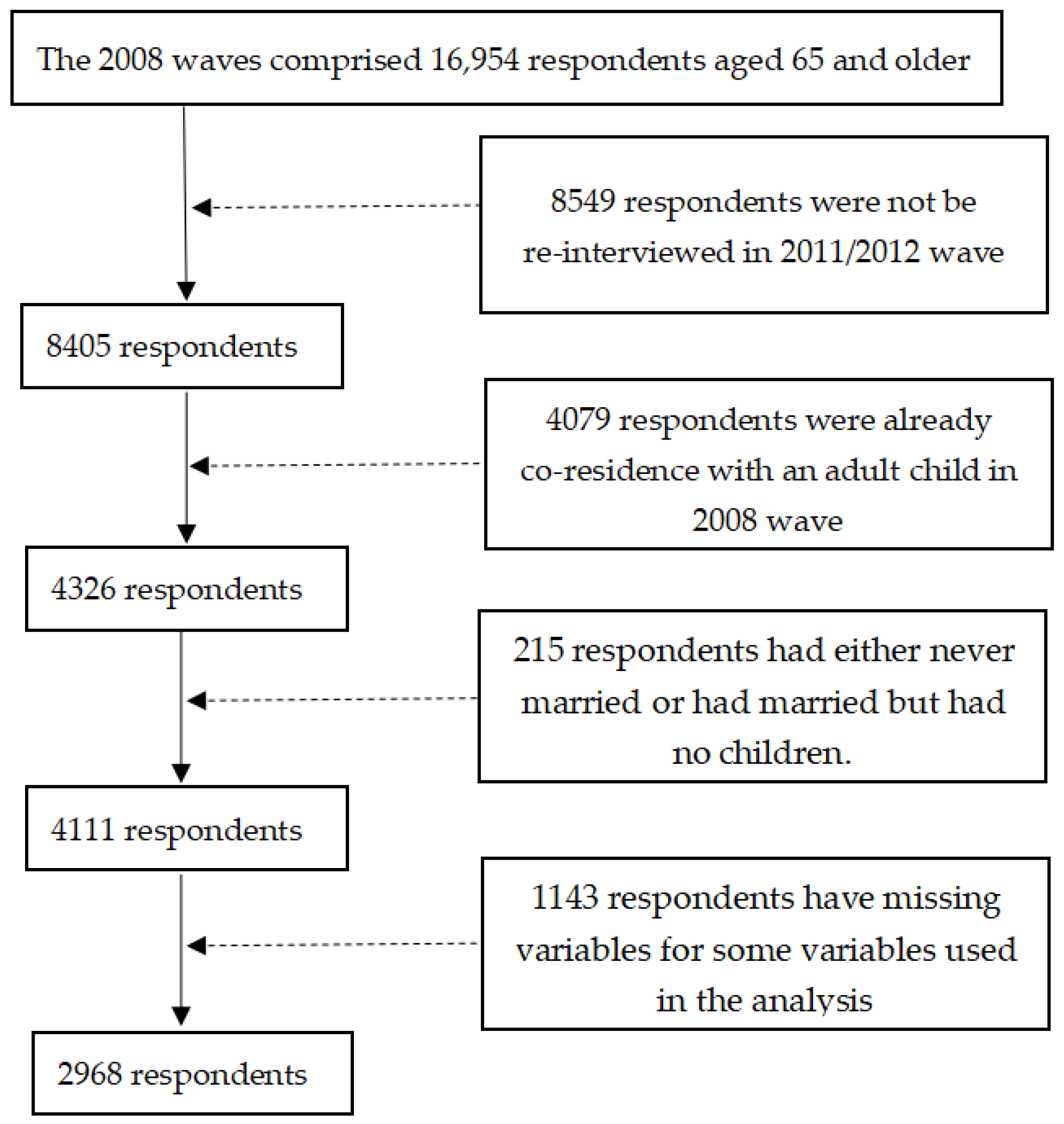
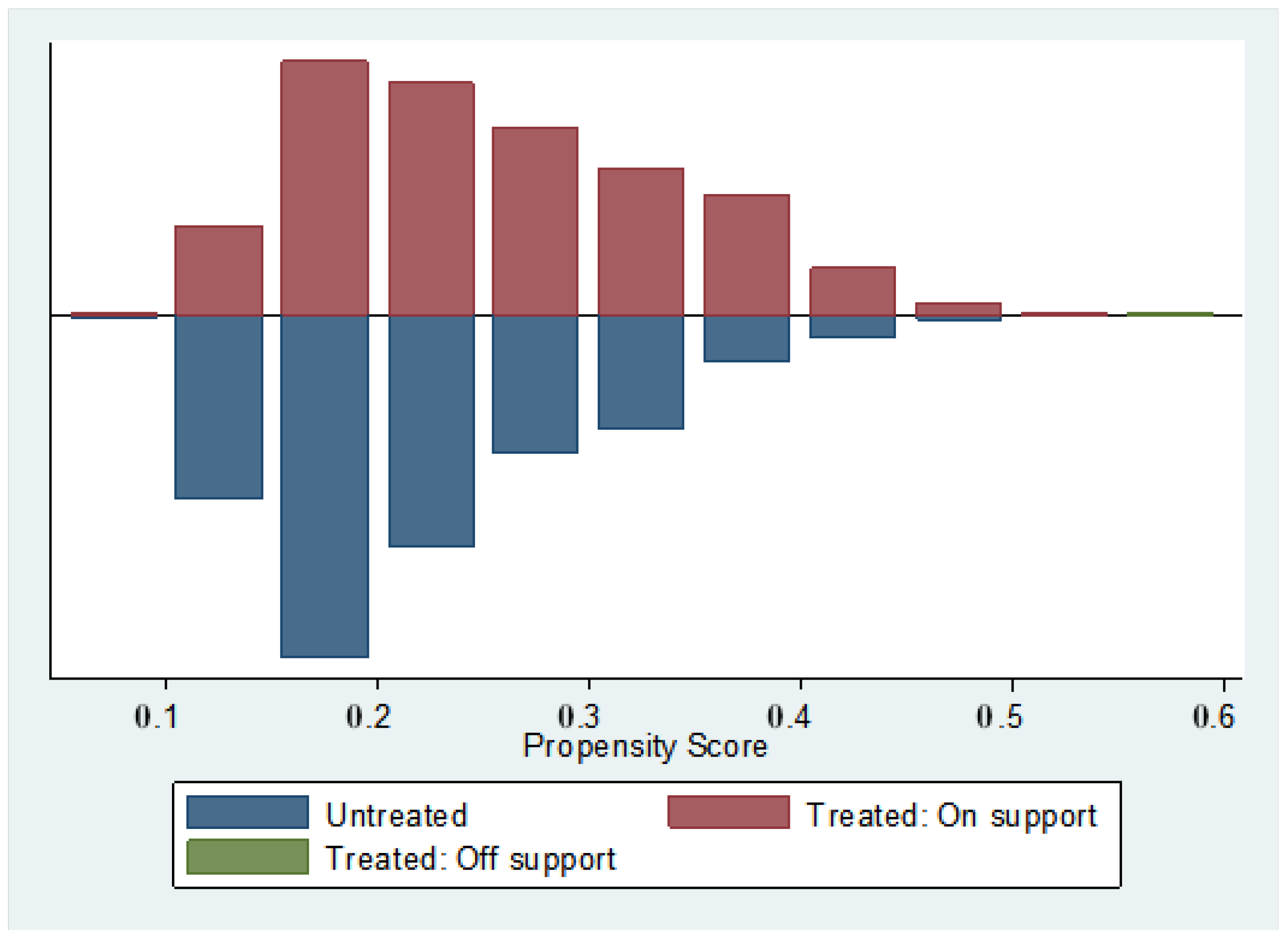
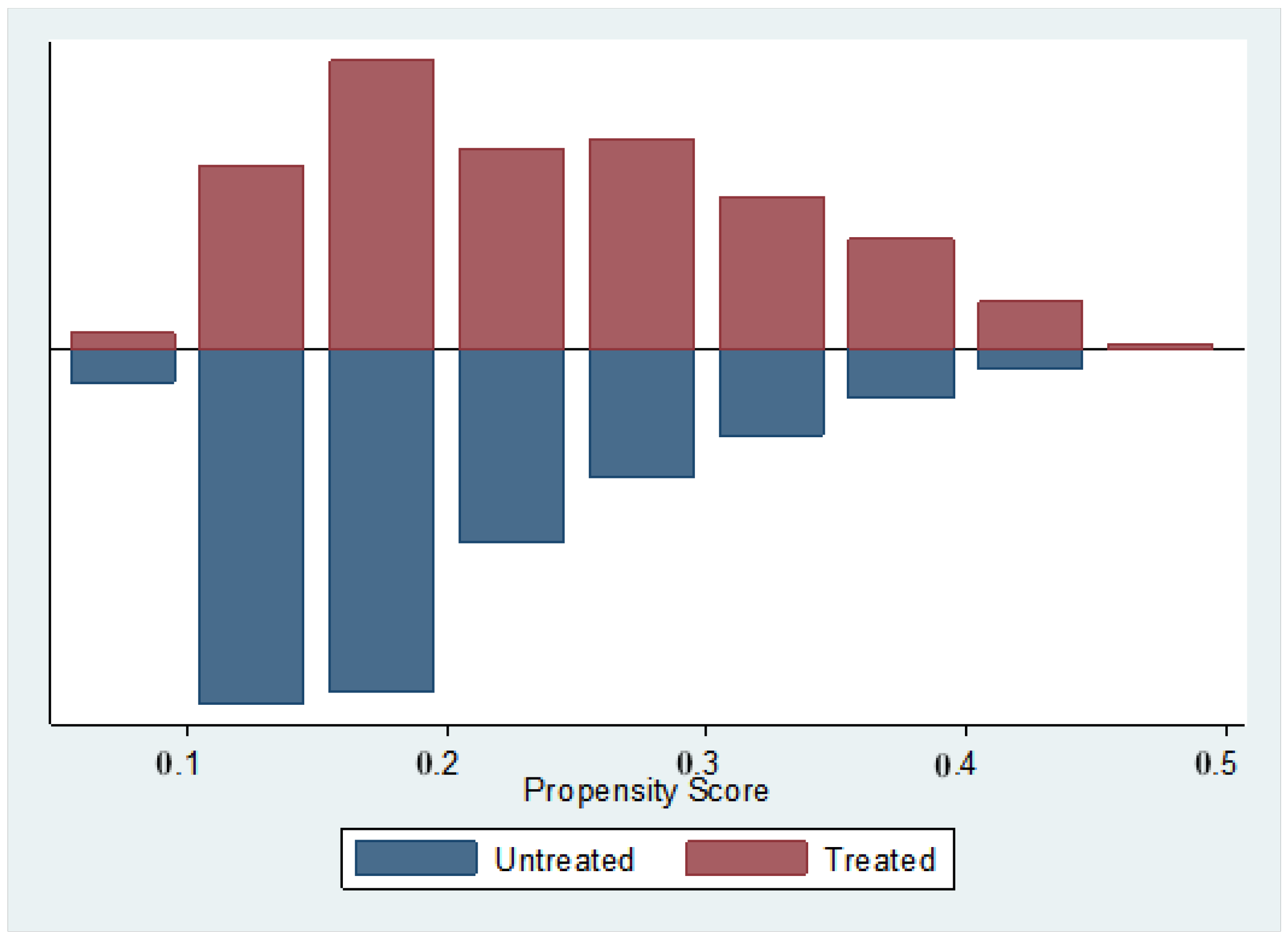

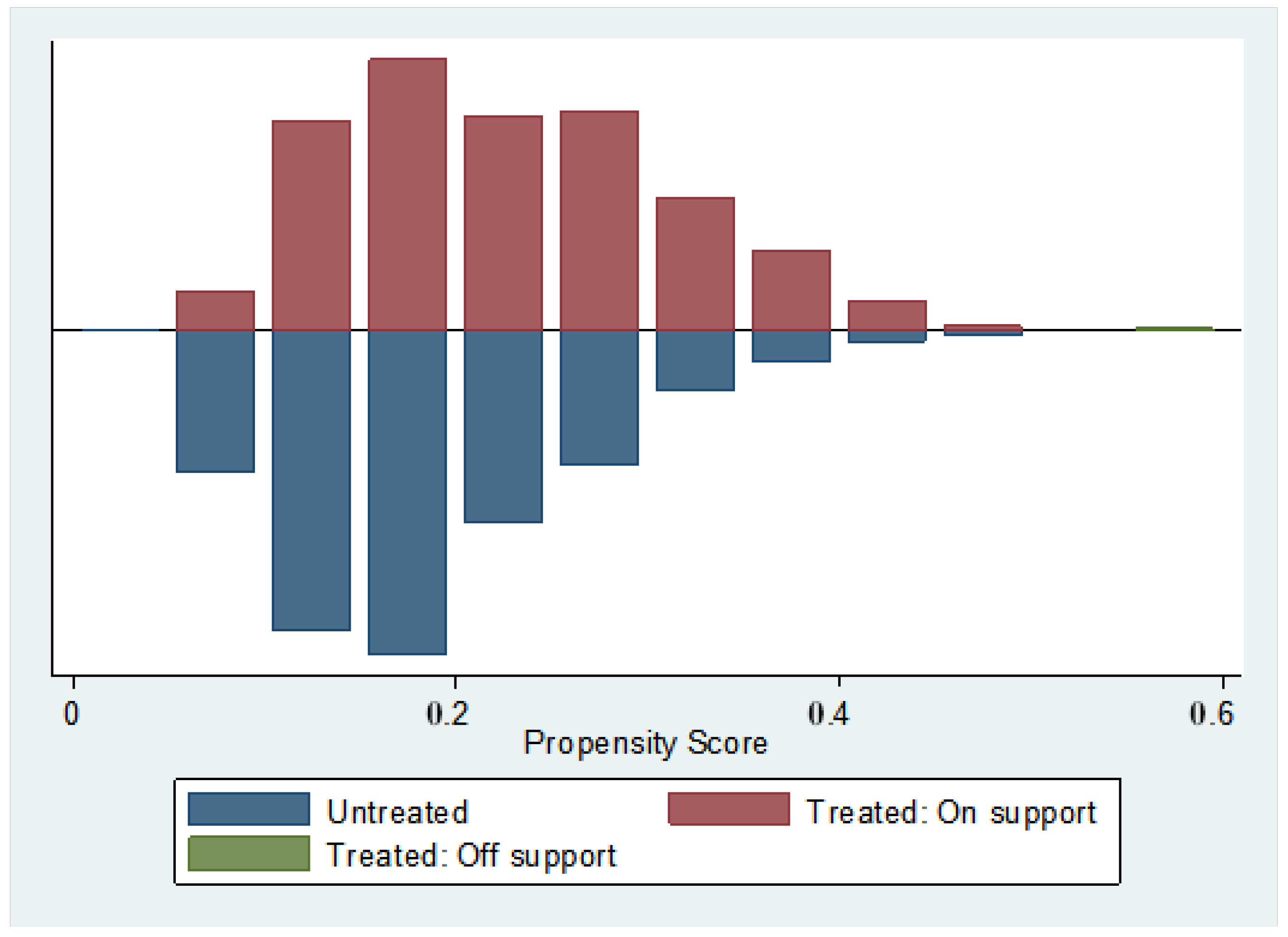
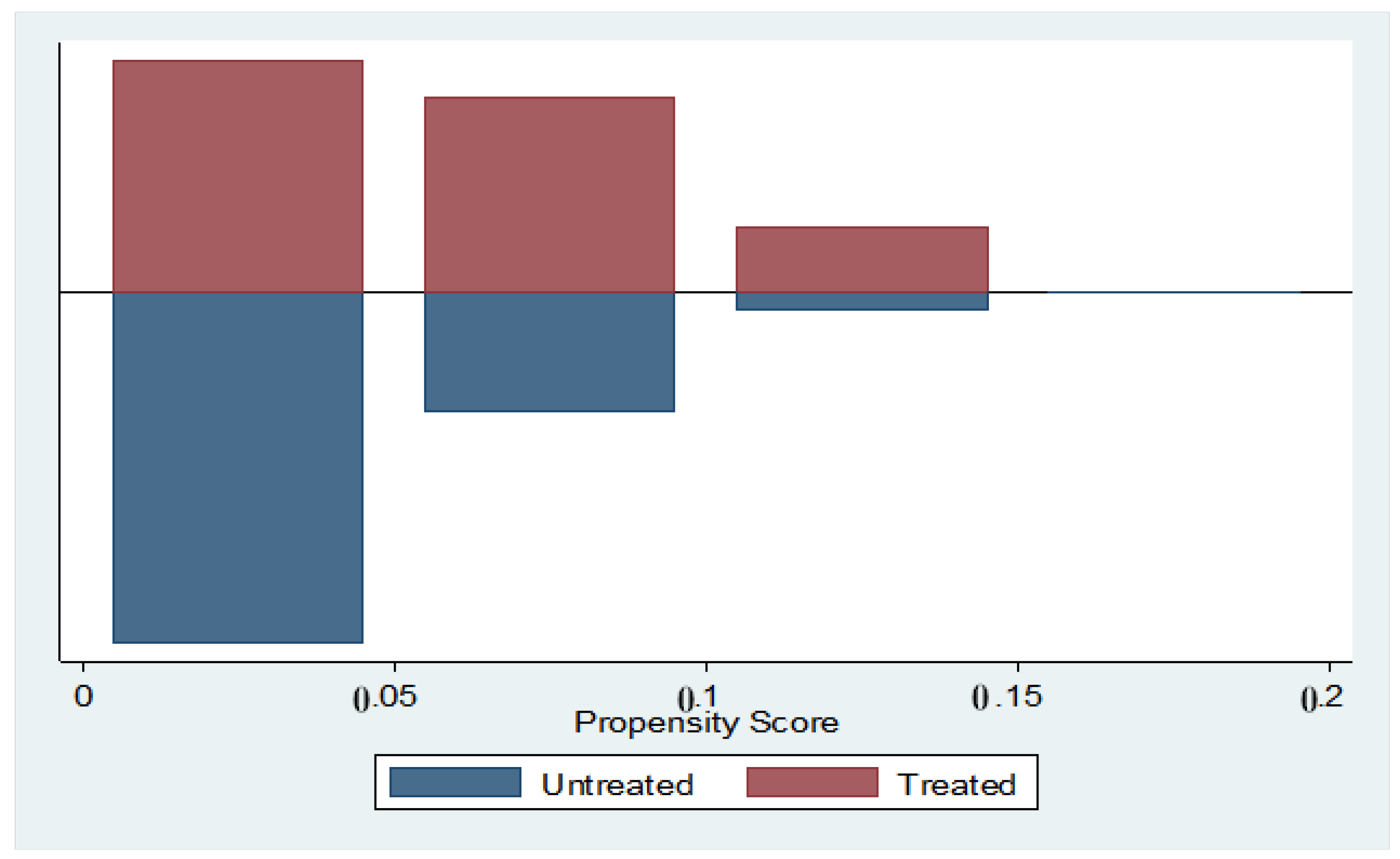
| Variables. | Mean (SD)/PCT | Min | Max | N |
|---|---|---|---|---|
| Positive well-being (PWB)_08 (range = 3–15) | 13.409 (1.599) | 6 | 15 | 2968 |
| Negative well-being (NWB)_08 (range = 3–15) | 8.48 (2.417) | 5 | 15 | 2968 |
| Positive well-being (PWB)_11/12 (range = 3–15) | 13.314 (1.64) | 6 | 15 | 2968 |
| Negative well-being (NWB)_11/12 (range = 3–15) | 8.697 (2.323) | 5 | 15 | 2968 |
| Age (years) | 78.101 (9.358) | 61 | 110 | 2968 |
| Female (vs. male) | 46.3 | 0 | 1 | 2968 |
| Married (vs. unmarried) | 64.2 | 0 | 1 | 2968 |
| Minority (vs. Han) | 3.2 | 0 | 1 | 2968 |
| Education (years) | 2.648 (3.682) | 0 | 22 | 2968 |
| Urban (vs. rural) | 37.4 | 0 | 1 | 2968 |
| Had activities of daily living disabled (vs. no) | 3.5 | 0 | 1 | 2968 |
| Self-rated health (range = 1–5) | 3.504 (0.935) | 1 | 5 | 2968 |
| Log (household income) | 8.87 (1.323) | 4.382 | 11.513 | 2968 |
| Has financial distress (vs. no) | 22.6 | 0 | 1 | 2968 |
| Agriculture/fishery occupation (vs. no) | 69.3 | 0 | 1 | 2968 |
| Lives in own house (vs. no) | 74 | 0 | 1 | 2968 |
| Number of children | 4.128 (1.808) | 1 | 13 | 2968 |
| Has old-age pension (vs. no) | 20.07 | 0 | 1 | 2968 |
| Has retired (vs. no) | 21.66 | 0 | 1 | 2968 |
| Variable | Sample | Treated | Controls | Difference | S.E. | z-Value | p-Value | Number Treated | Number Control |
|---|---|---|---|---|---|---|---|---|---|
| 677 | 2291 | ||||||||
| △PWB | Pre-matching | 0.06 | −0.14 | 0.21 | 0.09 | 2.35 *** | 0.019 | ||
| Post-matching | 0.07 | −0.11 | 0.17 | 0.09 | 1.89 * | 0.059 | |||
| △NWB | Pre-matching | 0.01 | 0.28 | −0.27 | 0.13 | −2.01 ** | 0.045 | ||
| Post-matching | 0.01 | 0.17 | −0.16 | 0.14 | −1.13 | 0.259 |
| Sample | Pseudo R2 | LR chi2 | p-Value | Mean Bias | Med Bias | B | R |
|---|---|---|---|---|---|---|---|
| Pre-matching | 0.03 | 104.05 | 0.00 | 14.60 | 15.70 | 45.0 * | 1.11 |
| Post-matching | 0.00 | 0.79 | 1.00 | 1.30 | 1.10 | 4.80 | 1.04 |
| Variable | Sample | Treated | Controls | Difference | SE | z-Value | p-Value | Number Treated | Number Control |
|---|---|---|---|---|---|---|---|---|---|
| Urban | 231 | 881 | |||||||
| △PWB | Pre-matching | −0.14 | −0.30 | 0.16 | 0.15 | 1.08 | 0.280 | ||
| Post-matching | −0.14 | −0.28 | 0.14 | 0.15 | 0.90 | 0.368 | |||
| △NWB | Pre-matching | 0.10 | 0.37 | −0.27 | 0.22 | −1.19 | 0.234 | ||
| Post-matching | 0.10 | 0.29 | −0.19 | 0.23 | −0.80 | 0.424 | |||
| Rural | 446 | 1410 | |||||||
| △PWB | Pre-matching | 0.17 | −0.04 | 0.21 | 0.11 | 1.96 ** | 0.050 | ||
| Post-matching | 0.18 | −0.01 | 0.19 | 0.11 | 1.69 * | 0.091 | |||
| △NWB | Pre-matching | −0.04 | 0.23 | −0.26 | 0.17 | −1.56 | 0.119 | ||
| Post-matching | −0.04 | 0.07 | −0.10 | 0.18 | −0.59 | 0.555 |
| Sample | Pseudo R2 | LR chi2 | p-Value | MeanBias | MedBias | B | R |
|---|---|---|---|---|---|---|---|
| Urban | |||||||
| Pre-matching | 0.04 | 43.39 | 0.00 | 14.30 | 13.20 | 49.3 * | 1.08 |
| Post-matching | 0.00 | 0.43 | 1.00 | 1.70 | 1.30 | 6.10 | 1.18 |
| Rural | |||||||
| Pre-matching | 0.04 | 71.51 | 0.00 | 15.70 | 12.70 | 46.0 * | 1.18 |
| Post-matching | 0.00 | 0.42 | 1.00 | 1.40 | 1.20 | 4.30 | 1.20 |
| Variable | Sample | Treated | Controls | Difference | S.E. | z-Value | p-Value | Number Treated | Number Control |
|---|---|---|---|---|---|---|---|---|---|
| Son | 555 | 2289 | |||||||
| △PWB | Pre-matching | 0.08 | −0.14 | 0.22 | 0.10 | 2.28 *** | 0.023 | ||
| Post-matching | 0.08 | −0.11 | 0.18 | 0.10 | 1.89 * | 0.059 | |||
| △NWB | Pre-matching | 0.07 | 0.28 | −0.21 | 0.14 | −1.42 | 0.156 | ||
| Post-matching | 0.07 | 0.16 | −0.09 | 0.15 | −0.62 | 0.535 | |||
| Daughter | 122 | 2722 | |||||||
| △PWB | Pre-matching | 0.03 | −0.14 | 0.17 | 0.20 | 0.85 | 0.395 | ||
| Post-matching | 0.03 | −0.13 | 0.16 | 0.20 | 0.81 | 0.418 | |||
| △NWB | Pre-matching | −0.42 | 0.28 | −0.70 | 0.30 | −2.32 *** | 0.020 | ||
| Post-matching | −0.42 | 0.21 | −0.63 | 0.31 | −2.05 *** | 0.040 |
| Sample | Pseudo R2 | LR chi2 | p-Value | MeanBias | MedBias | B | R |
|---|---|---|---|---|---|---|---|
| Son | |||||||
| Pre-matching | 0.04 | 117.86 | 0.00 | 17.90 | 20.10 | 52.3 * | 0.95 |
| Post-matching | 0.00 | 0.92 | 1.00 | 1.70 | 0.90 | 5.80 | 1.05 |
| Daughter | |||||||
| Pre-matching | 0.04 | 33.02 | 0.00 | 14.50 | 8.50 | 58.2 * | 1.04 |
| Post-matching | 0.02 | 6.16 | 0.94 | 8.70 | 5.30 | 34.2 * | 0.93 |
| Variable | A.Pooled | B.Urban | C.Rural | D.Son | E.Daughter | ||||||||||
|---|---|---|---|---|---|---|---|---|---|---|---|---|---|---|---|
| ATT | z-Value | p-Value | ATT | z-Value | p-Value | ATT | z-Value | p-Value | ATT | z-Value | p-Value | ATT | z-Value | p-Value | |
| Nearest-neighbor matching | |||||||||||||||
| △PWB | 0.21 | 2.08 ** | 0.038 | 0.28 | 1.61 | 0.108 | 0.2 | 1.59 | 0.112 | 0.13 | 1.17 | 0.242 | 0.06 | 0.24 | 0.810 |
| △NWB | −0.12 | −0.75 | 0.453 | −0.42 | −1.57 | 0.117 | 0.01 | 0.05 | 0.960 | −0.23 | −1.31 | 0.190 | −0.66 | −1.841 * | 0.066 |
| Radius matching | |||||||||||||||
| △PWB | 0.16 | 1.703 * | 0.089 | 0.15 | 0.98 | 0.327 | 0.21 | 1.807 * | 0.071 | 0.18 | 1.86 * | 0.063 | 0.14 | 0.71 | 0.478 |
| △NWB | −0.15 | −1.06 | 0.289 | −0.18 | −0.76 | 0.447 | −0.08 | −0.45 | 0.653 | −0.08 | −0.53 | 0.596 | −0.54 | −1.724 * | 0.085 |
| Kernel matching | |||||||||||||||
| △PWB | 0.17 | 1.894 * | 0.058 | 0.14 | 0.9 | 0.368 | 0.19 | 1.69 * | 0.091 | 0.18 | 1.89 * | 0.059 | 0.16 | 0.81 | 0.418 |
| △NWB | −0.16 | −1.13 | 0.259 | −0.19 | −0.8 | 0.424 | −0.1 | −0.59 | 0.555 | −0.1 | −0.62 | 0.535 | −0.63 | −2.047 ** | 0.041 |
© 2019 by the authors. Licensee MDPI, Basel, Switzerland. This article is an open access article distributed under the terms and conditions of the Creative Commons Attribution (CC BY) license (http://creativecommons.org/licenses/by/4.0/).
Share and Cite
Zhu, S.; Li, M.; Zhong, R.; Coyte, P.C. The Effects of Co-Residence on the Subjective Well-Being of Older Chinese Parents. Sustainability 2019, 11, 2090. https://doi.org/10.3390/su11072090
Zhu S, Li M, Zhong R, Coyte PC. The Effects of Co-Residence on the Subjective Well-Being of Older Chinese Parents. Sustainability. 2019; 11(7):2090. https://doi.org/10.3390/su11072090
Chicago/Turabian StyleZhu, Shanwen, Man Li, Renyao Zhong, and Peter C. Coyte. 2019. "The Effects of Co-Residence on the Subjective Well-Being of Older Chinese Parents" Sustainability 11, no. 7: 2090. https://doi.org/10.3390/su11072090
APA StyleZhu, S., Li, M., Zhong, R., & Coyte, P. C. (2019). The Effects of Co-Residence on the Subjective Well-Being of Older Chinese Parents. Sustainability, 11(7), 2090. https://doi.org/10.3390/su11072090





